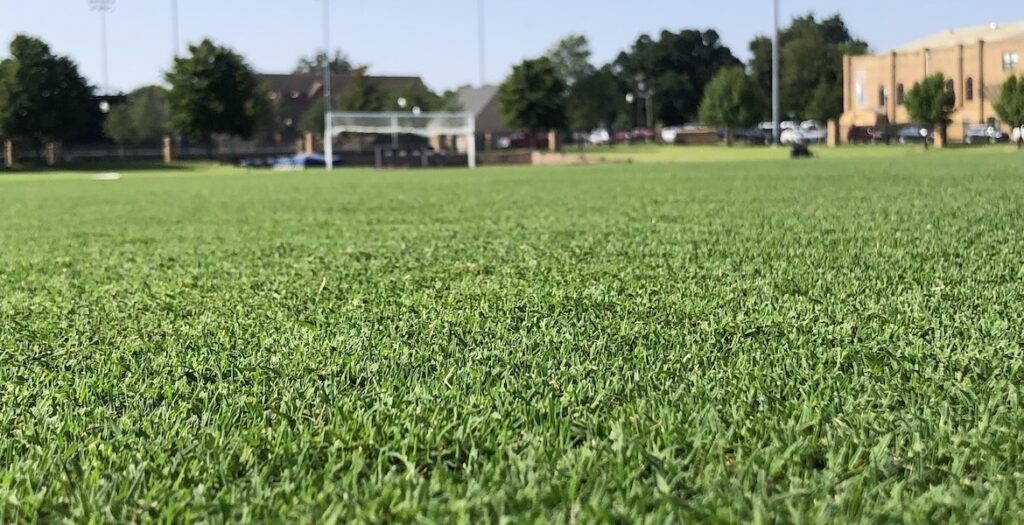Water-Saving Turf – What’s New?
- 2023-07-02
- By mkirk
- Posted in Horticulture, The Garden Buzz
By Martha Kirk, Colorado Master Gardener

Turf has gotten a bad rap recently. Homeowners are tearing out lawns and installing rock as a low maintenance and low water landscape. I’m here to tell you that rock is not the answer! It is costly and creates a heat island effect that is hard on soil and plant roots. In addition, woody shrubs and trees that remain must be watered. Tree root systems extend three times or more beyond the canopy.
Most homeowners have Kentucky Bluegrass (KBG), the most popular turfgrass planted, and with good reason. KBG is known for its durability; it is useful for high traffic areas where kids and pets play, it greens up early and is green in the fall, and it recovers well from dormancy. Yes, it requires water like all plants, but it can be water thrifty. In fact, the genetics of KBG have improved substantially over the years. New varieties offer better drought tolerance, disease resistance and shade tolerance. KBG lawns that are more than 15 years old can be improved simply by aerating and overseeding with new KBG varieties This approach is less disruptive, less costly and can be done every year.

If you like KBG but want a different type of turfgrass, consider Texas Hybrid Bluegrass (HBG). This is a cross between Texas Bluegrass and Kentucky Bluegrass. It is a cool season grass that looks like KBG but is more deeply rooted, has greater heat tolerance, offers improved summer performance and quick drought recovery, and may require less water. Common cultivars include Thermal Blue, SPF 30, and Reveille among others. Soil preparation is important to allow roots to grow deep.

Another turfgrass to consider is Tahoma 31. It is a bermudagrass, but it is cold tolerant allowing it to green up earlier and stay green longer. It requires less mowing and uses approximately 60% less water than KBG. Because it aggressively spreads by stolons and rhizomes, it is best planted where it can be contained on all sides by concrete such as a tree lawn that is surrounded by driveways, sidewalk and road.
No matter what type of turf you select, following best management practices (proper mowing, fertilization and watering) is key to having a healthy and good-looking lawn while conserving water. CSU Fact sheet 7.202 has all the tips you need to maintain a beautiful healthy low-water lawn.
Horticulture Resources
- Garden Buzz Archives
- CSU Extension Resources
- Colorado Master Gardener Program
- Foothills to Plains Native Plant Master Program
- Native Bee Watch Community Science Program
- The Co-Hort Blog
- PlantTalk Colorado
- Soil Testing
- Plant Select
- Emerald Ash Borer
- Japanese Beetle
- Colorado State Forest Service
- Ask an Expert


